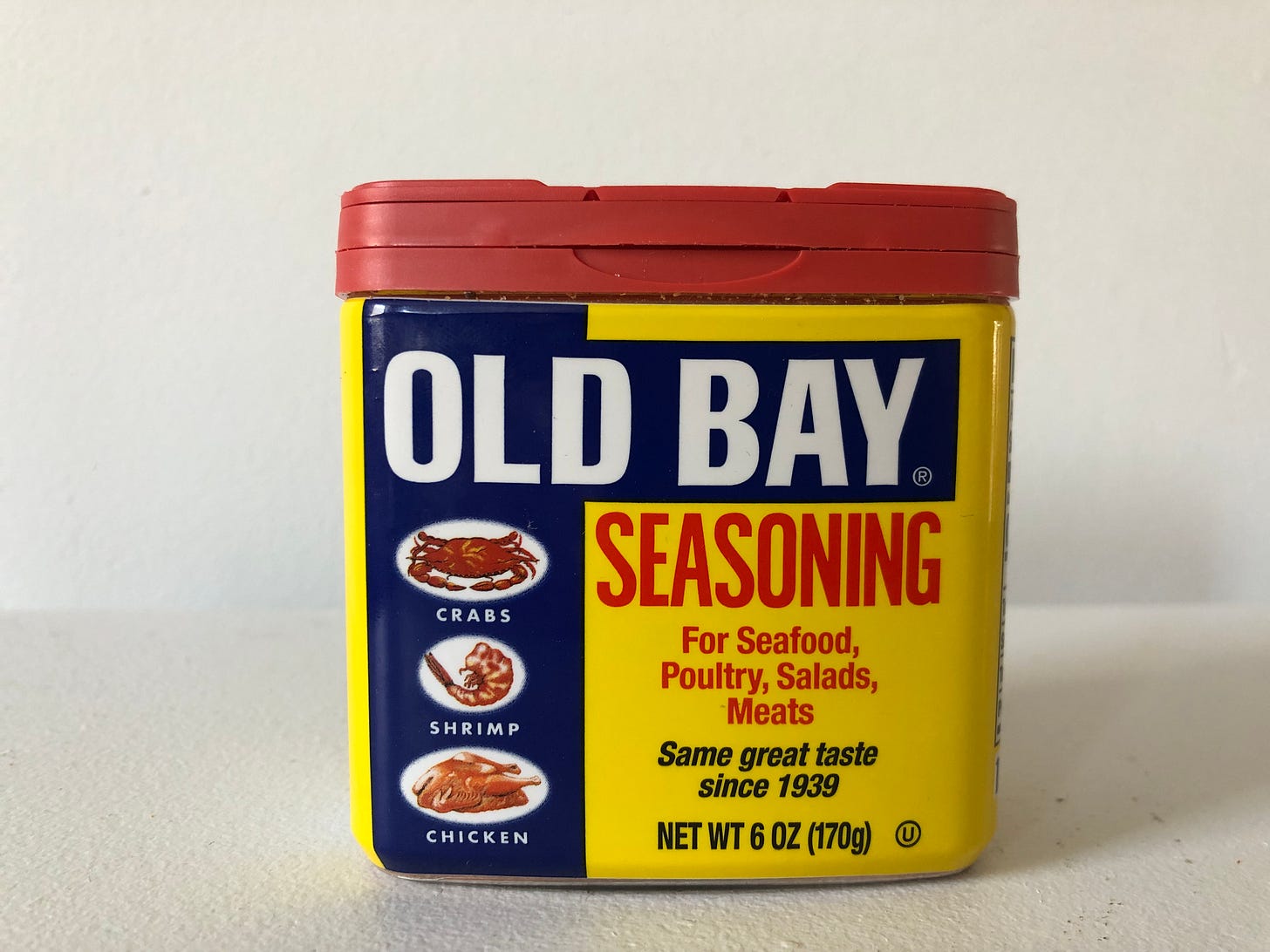Old Bay
An edible history - and a recipe.
Old Bay seasoning is one of America’s most iconic commercial spice blends. Particularly on the East Coast, that distinctive yellow can with the red lid, sits on the tables of seafood restaurants from Maine, to Maryland, and deep into the South.
Across the front of an Old Bay package, you will see the words, “Old Bay Seasoning: For Seafood, Poultry, Salads, Meats. Same great taste since 1939.” There are illustrations too – of a crab, a shrimp, and a whole chicken – indicating the proteins upon which you may douse this spice blend (though Old Bay is most often used on seafood).
I couldn’t imagine eating crab from Maryland without Old Bay. I think I’d be pretty shocked if I went to a seafood boil in the Northeast and the spread hadn’t been sprinkled in Old Bay. And when it comes to roasting a chicken (one of my favorite things to cook) Old Bay is my seasoning of choice (the recipe for which you will find below).
As I started to do some digging on the history of Old Bay this week, I learned that, though the reddish orange spice mixture has been making food delicious since 1939, its story goes back a bit earlier. And it doesn’t originate here in the U.S. The story of Old Bay begins in 1930s Nazi Germany, with a Jewish man named Gustav Brunn.
The rest of this article (and recipe) are for paid subscribers only. If you would like to upgrade to become a paid subscriber, click the link below.



